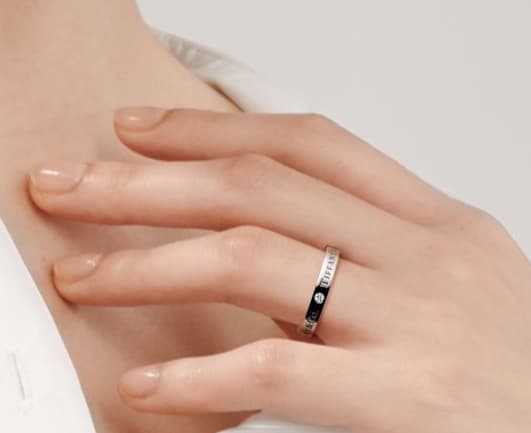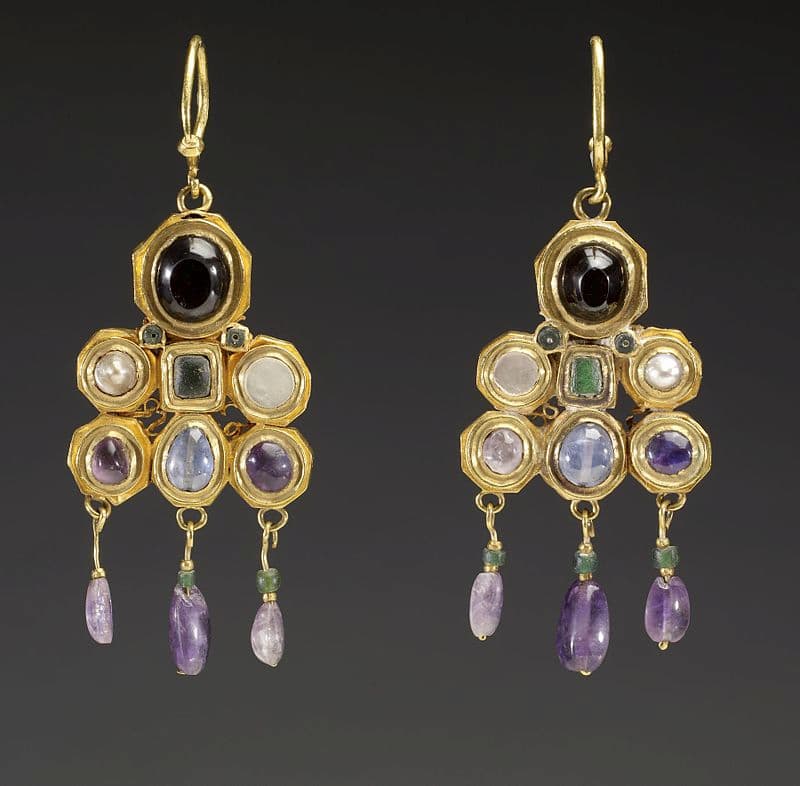Jewelry at King Richard’s Faire: A Medieval Reverence for Craftsmanship
by Samantha Costa
At King Richard’s Faire, I was exposed to a lot of the unique ways that people chose to celebrate the Medieval–– or, at least, the media inspired by it. From turkey legs to tournaments, it was shocking to see just how many people were willing to plunge themselves into the Middle Ages for an afternoon.
Despite the excitement of all the activities and performances, what really drew me in was the level of talent I saw from the shops–– especially those that sold “medieval” accessories.
Just look at the beautiful necklaces on display at “The Crystal Garden.” The number of shops that I saw with some of the most gorgeous handmade jewelry I had ever seen made me wonder how these people were selling in the woods of Carver instead of at their own store on Thayer Street!

But looking around the fair, anyone could see exactly why these jewelers were spending long hours outdoors instead of taking their work elsewhere.
In a world of fast fashion, most will look to H&M, Zara, and Shein to buy their everyday accessories, often ignoring that this jewelry is cheaply made, not durable, and overall uninteresting in style.

As for those with the money to buy expensive jewelry, their first thought is often not to buy the most well-crafted item–– it’s to buy the most recognizable piece for social clout.
In our capitalistic society, the brands rule over all else. We have put companies like Tiffany, Swarovski, or Cartier on such a high pedestal that just wearing their name has become synonymous with wearing something “beautiful.”
At the fair, however, there’s a different sort of appreciation there for baubles and adornments; a kind of deep respect for the level of craftsmanship that the jewelers put into their product. There, no one will look twice at your Tiffany–– but they’ll do a double take when you’re covered in intricately woven broaches, necklaces, and hair jewels!

To the left is an example of actual Medieval earrings, complete with colorful gemstones, dangles, and intricate metalwork. Not so different from what I saw at the fair!
I think that this stems from the deep appreciation for craftsmanship that the Middle Ages was rooted in. The poets of Norse mythology were called “skalds,” meaning “shaper” or “craftsman,” as a testament to the value of workmanship in Medieval society. Everything in the Norse myths seems to be intricately built by someone, from flying ships and to Thor’s mighty hammer. Even later on, Scott’s tournament scene in Ivanhoe recognized the Middle Ages’ appreciation of the flashy and the aesthetic, describing in detail all the splendor of the event that was enjoyed and honored by medieval citizens.
The fairgoers adopted the same medieval reverence for craftsmanship.
If there’s one thing that these people took seriously, it’s their aesthetic. Hundreds of people walking around not only in costume, but completely decked out in rings, necklaces, broaches, and crowns needed people to outfit their looks to match their medievalist tastes. And that taste isn’t cheap, and it certainly isn’t easy to come by. After all, it’s real silver and other metals intricately laced around gemstones into delicate patterns that could only be made by human handiwork. It is truly a testament of what craft can achieve when it is properly supported and appreciated.
In Conclusion…
Lots of King Richard’s Faire is more about fun than about appreciating the past. In fact, lots of it is downright silly for our entertainment. But the shops at the fair, particularly the jewelers, show that it is a place where lost arts can be revived in those that truly appreciate them. By being a forum for the appreciation of skill, dedication, and craftsmanship, King Richard’s Faire shows how medievalism still thrives in our modern world.
Check Out King Richard’s Faire for Yourself!(opens in a new tab)




